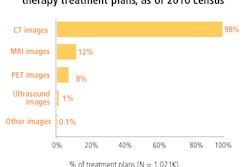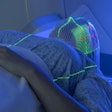SAN DIEGO - Mammography exams performed six months following breast conservation therapy may be a waste of time, money, and clinical resources, according to a study presented at the American Society for Radiation Oncology (ASTRO) annual meeting.
An analysis of cancers identified by short-interval mammograms acquired on more than 1,000 early-stage breast cancer patients revealed a lower yield compared to cancers identified in the same geographic population of asymptomatic women undergoing annual routine screening mammograms.
Intermountain Healthcare of Salt Lake City, with its network of 23 hospitals and more than 150 outpatient clinics, provides healthcare services to the majority of women living in Utah. William Sause, MD, a radiation oncologist at Intermountain Radiation Oncology in Murray, used Intermountain Healthcare's patient database to identify all women who underwent breast conservation surgery during a five-year period from 2003 to 2007, and also those patients who subsequently had at least one short-interval mammography exam.
A total of 1,454 patients were identified, of whom 1,386 (95%) had a short-interval mammogram. Mammograms were acquired at a median time of six months following diagnosis or treatment. This median time frame was in accordance with Intermountain Healthcare's guidelines recommending that early-stage breast cancer patients have a mammogram at six-month intervals for the first two years following diagnosis and treatment before resuming annual screening.
Within the total patient cohort, four cancers were identified by short-interval mammograms. This was equivalent to a yield of 2.9 cancers per 1,000 patients. The cancers included one contralateral tumor and three ipsilateral recurrences. By comparison, the yield of cancers identified in healthy, asymptomatic women undergoing annual routine screening mammograms at Intermountain radiology departments and women's centers was 4.4 cancers per 1,000 patients.
"The optimum timing and frequency of short-interval mammograms following breast conservation therapy is controversial," Sause said. "The American Society of Clinical Oncology recommends a first post-treatment mammogram within one year of diagnosis, but no earlier than six months after completion of radiotherapy. The National Comprehensive Cancer Network guidelines currently recommend a mammogram six to 12 months following radiation."
Over the course of five years, 25 cancer occurrences were identified in these breast cancer patients. The women had 16 ipsilateral recurrences, five contralateral tumors, and four distant failures. Mammography exams alone identified 17 of the cancers.
The one- and two-year breast tumor failure rate was 0.21% and 0.89%, respectively. Sause identified high tumor grade, a negative estrogen receptor status, and a negative progesterone receptor status as indicators of recurrence risk.
Although short-interval mammograms detected 16% of the cancer recurrences, they represent an unnecessary procedure that results in higher healthcare costs without significantly affecting patient outcomes, Sause told ASTRO attendees.
By Cynthia E. Keen
AuntMinnie.com staff writer
November 2, 2010
Related Reading
Short-interval follow-up mammograms for ‘probably benign’ lesions have low sensitivity, May 23, 2008
Risk factors for ipsilateral breast tumor recurrence identified, February 1, 2006
Copyright © 2010 AuntMinnie.com



















